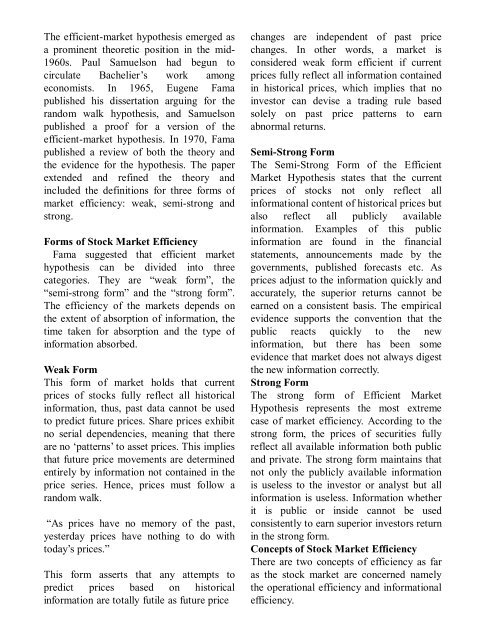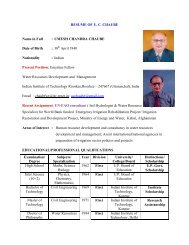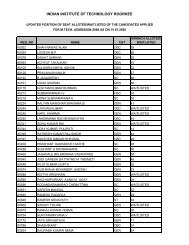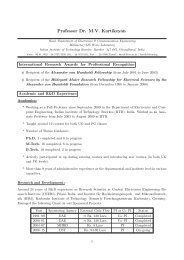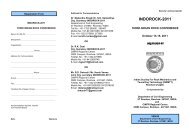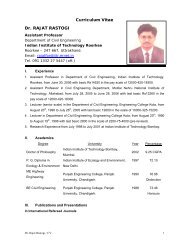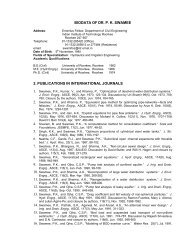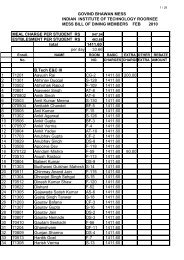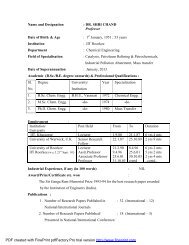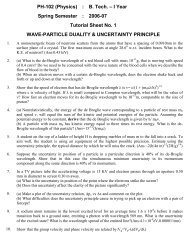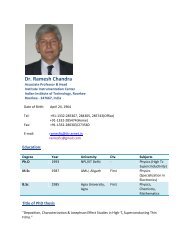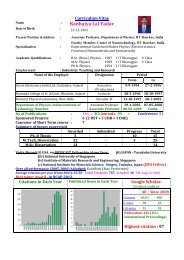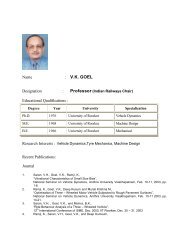Rohit Bansal - IIT Roorkee
Rohit Bansal - IIT Roorkee
Rohit Bansal - IIT Roorkee
- No tags were found...
Create successful ePaper yourself
Turn your PDF publications into a flip-book with our unique Google optimized e-Paper software.
The efficient-market hypothesis emerged asa prominent theoretic position in the mid-1960s. Paul Samuelson had begun tocirculate Bachelier‟s work amongeconomists. In 1965, Eugene Famapublished his dissertation arguing for therandom walk hypothesis, and Samuelsonpublished a proof for a version of theefficient-market hypothesis. In 1970, Famapublished a review of both the theory andthe evidence for the hypothesis. The paperextended and refined the theory andincluded the definitions for three forms ofmarket efficiency: weak, semi-strong andstrong.Forms of Stock Market EfficiencyFama suggested that efficient markethypothesis can be divided into threecategories. They are “weak form”, the“semi-strong form” and the “strong form”.The efficiency of the markets depends onthe extent of absorption of information, thetime taken for absorption and the type ofinformation absorbed.Weak FormThis form of market holds that currentprices of stocks fully reflect all historicalinformation, thus, past data cannot be usedto predict future prices. Share prices exhibitno serial dependencies, meaning that thereare no „patterns‟ to asset prices. This impliesthat future price movements are determinedentirely by information not contained in theprice series. Hence, prices must follow arandom walk.“As prices have no memory of the past,yesterday prices have nothing to do withtoday‟s prices.”This form asserts that any attempts topredict prices based on historicalinformation are totally futile as future pricechanges are independent of past pricechanges. In other words, a market isconsidered weak form efficient if currentprices fully reflect all information containedin historical prices, which implies that noinvestor can devise a trading rule basedsolely on past price patterns to earnabnormal returns.Semi-Strong FormThe Semi-Strong Form of the EfficientMarket Hypothesis states that the currentprices of stocks not only reflect allinformational content of historical prices butalso reflect all publicly availableinformation. Examples of this publicinformation are found in the financialstatements, announcements made by thegovernments, published forecasts etc. Asprices adjust to the information quickly andaccurately, the superior returns cannot beearned on a consistent basis. The empiricalevidence supports the convention that thepublic reacts quickly to the newinformation, but there has been someevidence that market does not always digestthe new information correctly.Strong FormThe strong form of Efficient MarketHypothesis represents the most extremecase of market efficiency. According to thestrong form, the prices of securities fullyreflect all available information both publicand private. The strong form maintains thatnot only the publicly available informationis useless to the investor or analyst but allinformation is useless. Information whetherit is public or inside cannot be usedconsistently to earn superior investors returnin the strong form.Concepts of Stock Market EfficiencyThere are two concepts of efficiency as faras the stock market are concerned namelythe operational efficiency and informationalefficiency.


